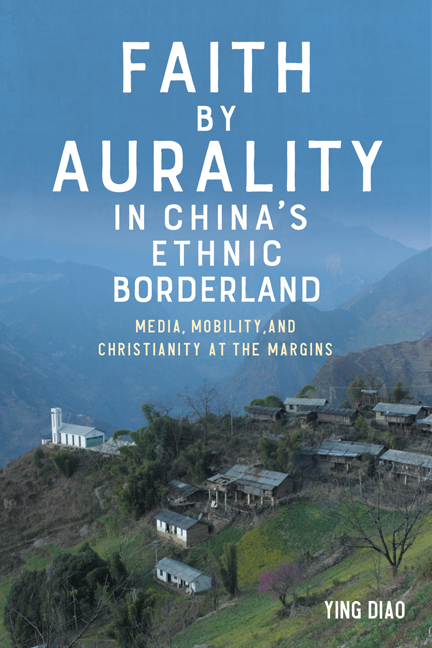Book contents
- Frontmatter
- Dedication
- Contents
- Acknowledgments
- Notes on Romanization and Terminology
- Introduction
- 1 Becoming the Faithful: Cleanliness and Conversion
- 2 Hearing the Return of Faith: Radio and Listening Audience
- 3 Producing Gospel Songs: Studio and Media Practitioners
- 4 Faces and Places: Sounds That Recognize
- 5 Traces of Faith: Sound Artifacts and Infrastructures
- 6 Performing Recorded Songs: Religiosity by Body
- 7 Hidden Faith: Sanitizing the Voice
- Conclusion: Faith on the New Frontier
- Appendix 1 Glossary of Old Lisu
- Appendix 2 Glossary of Chinese Characters
- References
- Index
2 - Hearing the Return of Faith: Radio and Listening Audience
Published online by Cambridge University Press: 15 May 2024
- Frontmatter
- Dedication
- Contents
- Acknowledgments
- Notes on Romanization and Terminology
- Introduction
- 1 Becoming the Faithful: Cleanliness and Conversion
- 2 Hearing the Return of Faith: Radio and Listening Audience
- 3 Producing Gospel Songs: Studio and Media Practitioners
- 4 Faces and Places: Sounds That Recognize
- 5 Traces of Faith: Sound Artifacts and Infrastructures
- 6 Performing Recorded Songs: Religiosity by Body
- 7 Hidden Faith: Sanitizing the Voice
- Conclusion: Faith on the New Frontier
- Appendix 1 Glossary of Old Lisu
- Appendix 2 Glossary of Chinese Characters
- References
- Index
Summary
[Gospel radio broadcasts are a] vital part of reestablishing the morale of the Christians in the midst of violent rebel fighting and Communist threats.
—ACS Newsletter, June 1976From a Lisu preacher in northeast India:
Oh, Teacher, the one who understands our customs and agrees with us in our goals, on Thursday evening when we were listening to the “puller-of-sound-of-wind” and we heard someone preaching with voice like yours, we said, “Wonder of wonders, it is the voice of our preacher Joseph [LaVerne],” and all the listeners had tears flowing.
—ACS Newsletter, July 1972At prime time (20:00–20:30, Thai Time), on any given evening across the regions of southwestern China and Southeast Asia, the Lisu can tune in to a thirty-minute radio program, a mix of preaching and music, broadcast from the Manila station of the Far East Broadcasting Company (FEBC), an international Christian radio network founded in 1948 and broadcasting in 124 languages from their globally distributed transmitters. Lae Mae Samuel, a Burmese Lisu pastor based at the Chiang Mai Christian Lisu church, currently serves as the announcer addressing the listeners from the far north of rural India to the suburban families in Yangon: “Brothers and sisters, tonight let's come together again and study God's word.” This opening statement implicitly indicates the power of the radio in bringing the voice of God to an aural audience across national borders. Lisu AM radio broadcasting was started in 1968 as a turning point in the Morse missionary families’ effort to reestablish contact with their former converts in Myanmar and China. Sound technologies—chief among them the radio broadcasting network— were used in the continuation of Western missionaries’ evangelistic endeavor to make up for their physical absence. For the hanleixsu, recorded sounds became an emerging Christian phenomenon.
This chapter examines the key sound technology of this remote (re) construction of Christian communities: radio broadcasting, as carried out in the context of postcolonial media evangelism. Attempts to reconstruct a comprehensive historical radio-listening culture by relying solely on recordings, oral histories, and mission newsletters were beside the point.
- Type
- Chapter
- Information
- Faith by Aurality in China's Ethnic BorderlandMedia, Mobility, and Christianity at the Margins, pp. 50 - 68Publisher: Boydell & BrewerPrint publication year: 2023



